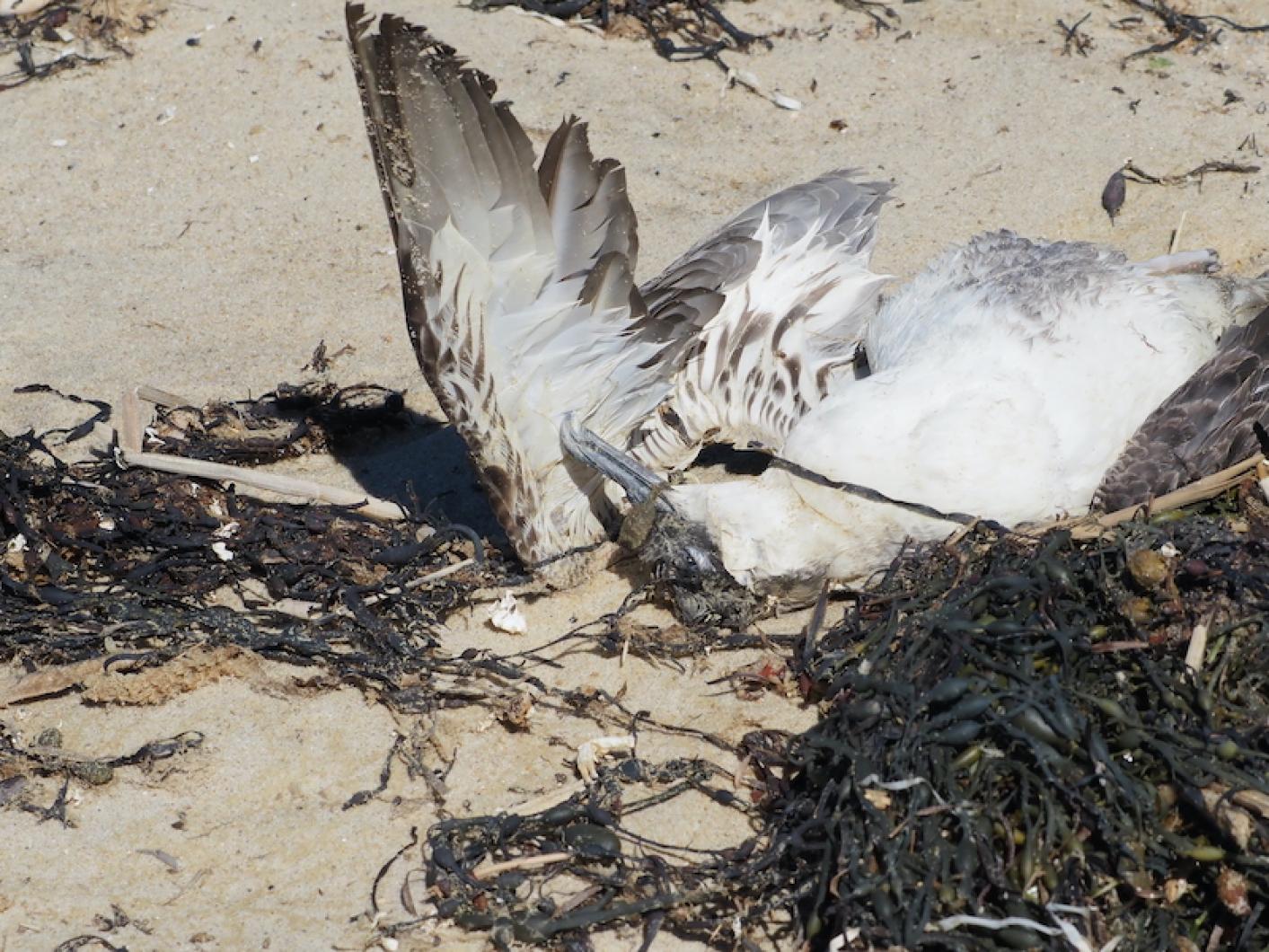State environmental officials said Wednesday that they now “strongly suspect” that avian influenza is responsible for the death of large numbers of seabirds washing up on Island shores.
“Highly pathogenic avian influenza, which very rarely infects humans, is suspected to be the cause of deceased birds along Massachusetts’ coastline,” the Massachusetts Department of Fish and Game said in a press release Wednesday afternoon.
In the statement, a variety of state departments, including Fish and Game, Wildlife, Agricultural Resources, and Public Health, collectively urged the public “to refrain from touching or removing birds from coastal areas that appear sick, injured, or deceased.”
The statement also cited an uptick in dead eiders, cormorants and gulls, and warns that the influenza can infect domestic animals.
Over the past 10 days, Island birdwatchers have reported a large number of dead great shearwaters, an oceanic migratory bird, turning up on shores from Squibnocket to Norton Point. Other reports, including one from the Edgartown animal control office, suggested dead cormorants had also been collected.
“We are aware of the shearwater mortalities on Martha’s Vineyard and elsewhere, and are in coordination with several partners, including USDA, states and NGOs,” said Caleb Spiegel, a wildlife biologist with the migratory birds program for the U.S. Fish and Wildlife northeast region, in an email to the Gazette Tuesday afternoon.
Reports earlier in the week that the birds had died from avian influenza (AI) had not been confirmed.
“While AI, to my knowledge, has not been confirmed in great shearwaters on our coast, it is important to take extra precautions right now when encountering dead birds to avoid spread to other animals,” Mr. Spiegel wrote. “In other locations (e.g., Europe, Atlantic Canada) AI has been confirmed in seabirds.”
He also said he had been in contact wildlife veterinarian Samantha Gibbs, chief of the wildlife health office for USFW.
The reports of dead shearwaters first began around June 10 and June 11, according to Rob Culbert, who writes the weekly Bird News column for the Gazette.
“We’re up to 69 birds found since [June 10th],” Mr. Culbert told the Gazette.
He suggested the mortality could be due to natural causes. “We always find dead sea birds in June, dead shearwaters in June, on the beaches,” Mr. Culbert said, although he acknolwedged that the number of birds is quite large.
Other wildlife experts said more information is needed, given the large number of birds being found and the known outbreak of avian influenza in far-flung locations.
“It could be avian flu, it could be other stuff . . . It’s anyone’s guess at this point,” said Luanne Johnson, executive director of Biodiversity Works, a nonprofit based in Vineyard Haven.
“There’s been a major die-off, disease is suspected, and people shouldn’t handle the corpses,” Ms. Johnson said, adding: “If it’s natural die-off, it’s a pretty bad die-off.”
Ms. Johnson said everyone should wait for the necropsies to come back and for a wildlife veterinarian’s perspective.
“It’s a lot of birds — it’s more than I’ve ever seen,” she said.
The department of fish and game statement calls for the public to report dead or dying seabirds to mass.gov/reportbirds. If avian flu is observed in domestic animals, the public is asked contacted the Department of Agricultural Resources at (617) 626-1795.
Updated to include press release and new information from state environmental officials.







Comments (5)
Comments
Comment policy »